Did you know Austin was originally named Waterloo and stood on the shifting edge of the Texas frontier? From its surprising roots to its vibrant present, Austin history is a tapestry woven with innovation, resilience, and spirited culture. In this in-depth look at the city’s past, you’ll discover the hidden stories that transformed the town of Austin into the energetic capital city recognized across the United States. Whether you’re captivated by tales of the Texas State Capitol , inspired by the music scene on Congress Avenue, or searching for untold stories in East Austin, this guide invites you to experience the city’s rich legacy firsthand.
- Unusual beginnings of Austin and its journey as the capital city
- Impact of the Colorado River, Congress Avenue, and music scene on Austin’s development
- Influential moments such as civil rights and African American contributions
- Unexpected connections with the University of Texas and Texas State
- Where to explore the best-kept secrets at the Austin History Center
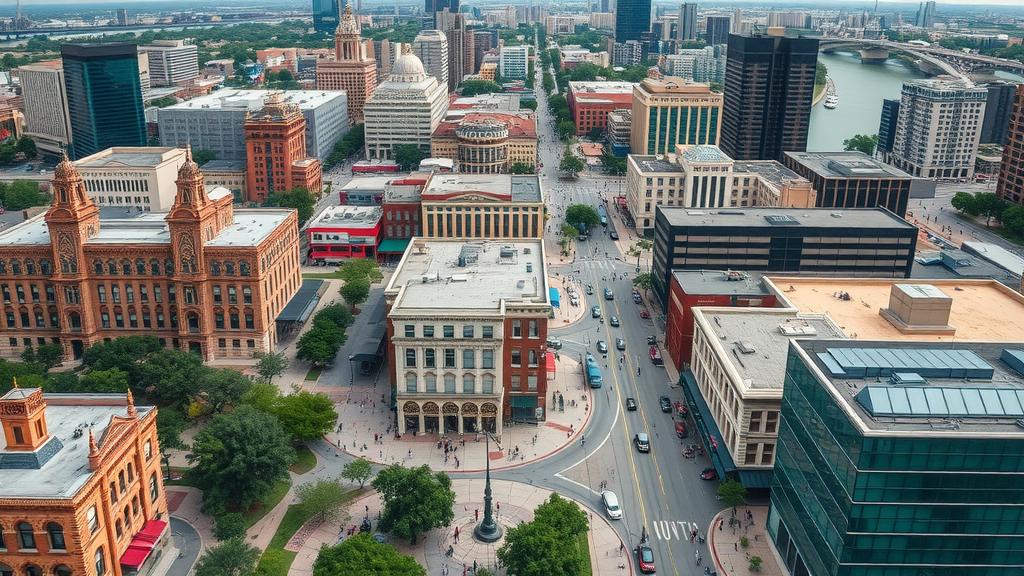
Revealing Surprises: How Austin History Defies Expectations
When most people think about Austin, live music and high-tech innovation might spring to mind. However, the austin history narrative is far more multi-layered. Few realize the city’s origin began as a small settlement called Waterloo, only to be thrust into the political spotlight as the capital city of the newly formed Republic of Texas . The journey from outpost to vibrant metropolis wasn’t straightforward; it included battling the Colorado River’s floods, overcoming setbacks from the Civil War, and redefining its boundaries time and again.
Austin’s story is defined by a blend of unexpected challenges and pivotal moments. Landmark events such as the civil rights movement in East Austin, construction of the Texas State Capitol rivaling the United States Capitol, and the ongoing influence of the University of Texas shaped its character. These stories, hidden in everyday places from Congress Avenue to Barton Springs, reveal how the city has continuously reinvented itself. Exploring Austin history means walking the crossroads of politics, culture, and resilience, encountering the people and places that make it uniquely Texan and globally renowned.
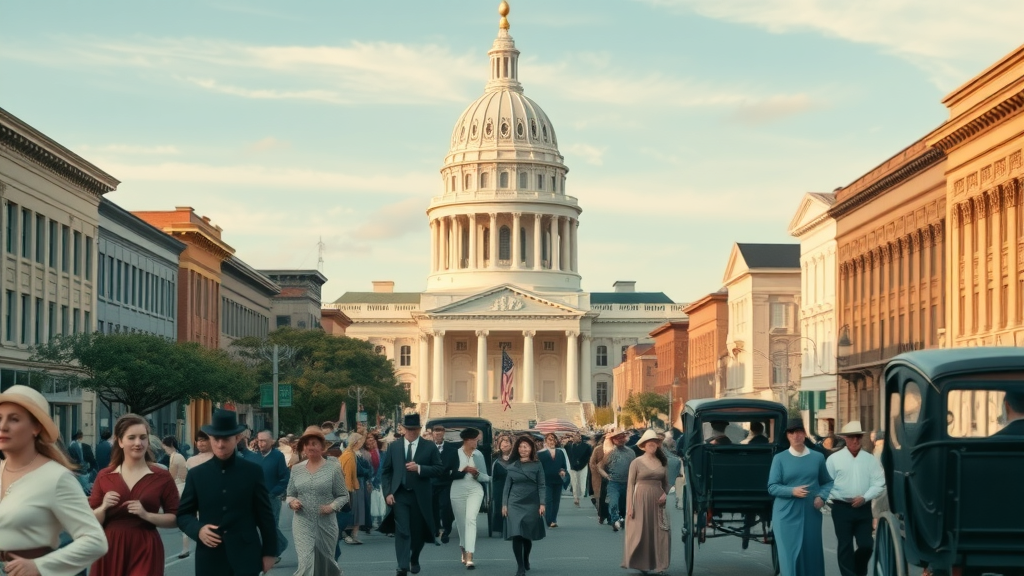
Austin History’s Origins: From Village to State Capitol
The Founding of the Town of Austin and the Republic of Texas
In the 1830s, the banks of the Colorado River served as the backdrop for one of the most significant chapters of Texas history . What began as a modest settlement known as Waterloo, nestled in central Texas , was quickly transformed by political ambition and natural beauty. The Republic of Texas, seeking a new seat of government, chose Waterloo in 1839 for its central location and breathtaking surroundings. Renamed in honor of Stephen F. Austin, the “Father of Texas,” the town of Austin became a symbol of hope for a young nation asserting its identity outside Mexican and later United States’ governance.
The city’s early days were marked by uncertainty. Constant threats from floods and conflict only added to Austin’s palpable tension, particularly during the Civil War and subsequent power shifts. Yet, Sam Houston himself recognized Austin’s potential, despite skepticism about its vulnerability and distance from established settlements. The new capital rapidly grew as governmental and cultural figures flocked to the city, laying the groundwork for what would become the central hub of Texas state power.
Austin’s Early Days: Naming the City and Central Texas Beginnings
The decision to designate Austin as the capital was as much a nod to geography as to politics. Envisioned as a “City on the Hill,” Austin’s placement in central Texas allowed it to anchor a fledgling Texas republic. The city's naming—transitioning from Waterloo to Austin—reflected a desire to honor a pivotal leader and to assert a new identity separate from both its Mexican past and the broader United States . By 1840, Austin's layout was set: Congress Avenue slicing through the patchwork of newly planned streets, destined to become the city’s iconic backbone.
These foundational years set the stage for the city’s growth and character. The boundaries of early town Austin were defined by creeks, the Colorado River, and the ambitions of its founders. Over time, Austin’s resilience in the face of adversity—from wars to natural disasters—helped shape its lasting identity. This period also set in motion attitudes of diversity and innovation that have become the city’s hallmark, from its earliest settlers to the vibrant communities of today.
| Timeline of Austin History Events | Key Figures | Significance |
|---|---|---|
| 1839: Austin named capital of Republic of Texas | Stephen F. Austin, Mirabeau B. Lamar | Established Austin as political center |
| 1845: Texas joins United States | Sam Houston | Secured Austin as permanent state capital |
| 1888: State Capitol completed | Governor John Ireland | Symbol of Texas pride and resilience |
| 1900s: East Austin community growth | African American and Latino leaders | Civil rights momentum and neighborhood identity |
| 1970s: Austin declared “Live Music Capital” | Music scene pioneers | Set stage for global cultural influence |
Colorado River, Congress Avenue, and the Making of Austin City
Why the Colorado River Was Vital in Austin History
The mighty Colorado River defines both the geography and the destiny of Austin city . From its earliest settlement, the river was the city’s lifeline—providing water, fertile grounds, and a key route for transportation. However, its unpredictable floods also posed severe challenges, forcing residents to rebuild and adapt. The decision to place the capital city by the Colorado River was a testament to the belief that its advantages would outweigh the risks—a bet that ultimately paid off as the city expanded and tamed the river with bridges and dams.
The Colorado River carved out a distinct identity for Austin, dividing neighborhoods and influencing the layout of streets and commerce. Over the years, the river transformed into a point of pride—a place for recreation at Barton Springs, thriving wildlife, and a scene for music festivals. Each era’s interaction with the river symbolizes a new chapter in austin history : from frontier obstacle to environmental asset, it remains central to the city’s narrative and appeal.
Congress Avenue: The Evolution of Austin’s Iconic Thoroughfare
At the heart of Austin city lies Congress Avenue , a grand boulevard conceived in the earliest city plans of the Republic of Texas . What began as a simple path soon became a bustling artery of political processions, festivals, and daily life. Stretching from the Colorado River to the doors of the Texas State Capitol , Congress Avenue connected community and commerce, evolving alongside Austin’s shifting city limits and aspirations.
Today, Congress Avenue is more than a roadway—it is a living stage for Austin’s parades, demonstrations, and live music events. The historic facades along the avenue echo with stories from past centuries, while modern businesses, theaters, and eateries inject buzzing energy into the avenue’s Phoenix-like cycle of renewal. By walking Congress Avenue, residents and visitors alike experience the interplay between tradition and progress that defines austin history .
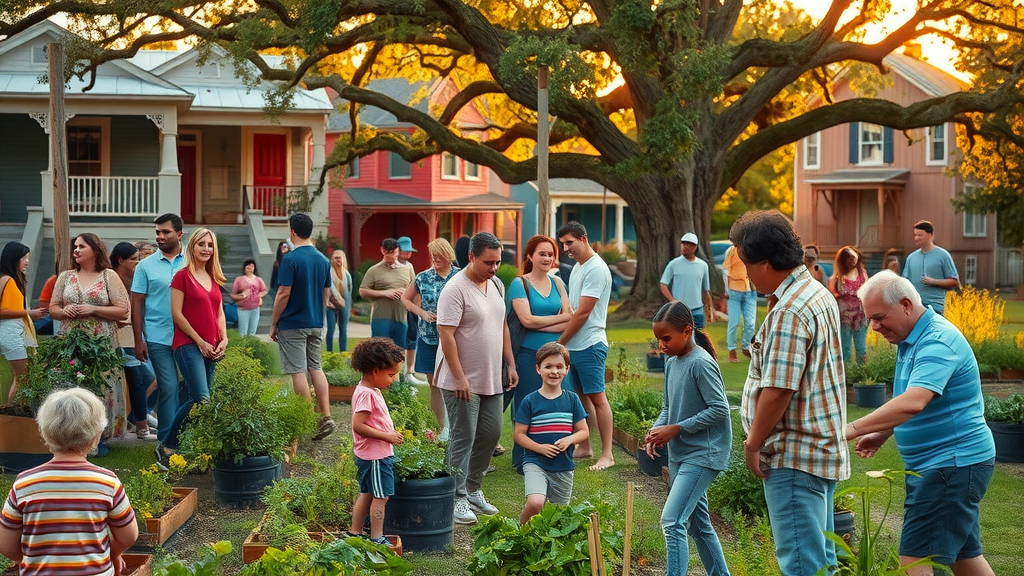
State Capitol Constructions and the Shaping of the Capital of Texas
No symbol looms larger in Austin history than the Texas State Capitol . Completed in 1888 after years of debate and financial hurdles, the building became an icon of Texas’ independence and ambition. Its pink granite walls, taller than the U.S. Capitol in Washington, D.C., reflect the pride of a capital city eager to stand apart. The construction drew laborers, artisans, and engineers from across the United States, infusing new energy into the city's rapidly diversifying population.
The Capitol not only anchored political life but also shaped the city’s geography, dictating the direction of growth and the location of powerful institutions. Standing sentinel at the head of Congress Avenue, it became a gathering place for historic moments—the signing of bills, civil rights marches, and public celebrations. In many ways, the state capitol serves as a touchstone for the city’s evolving identity, connecting Austin’s frontier origins to its modern role at the heart of Texas state governance.
African American Heritage and Civil Rights in Austin History
East Austin: Stories of Community, Growth, and Challenge
East Austin has long stood as a vibrant epicenter of african american culture, resilience, and community-building. Segregated by both law and custom through much of the 20th century, neighborhoods east of Interstate 35 became both a refuge and a crucible for families, artists, entrepreneurs, and civil rights activists. Churches, jazz clubs, and corner stores served as gathering points where challenges were met with creativity and solidarity.
Despite decades of discriminatory policies—such as redlining, urban renewal, and infrastructure projects that isolated communities—East Austin’s residents continued to create spaces filled with music, art, and activism. The civil rights era brought transformative change as leaders demanded better schools, housing, and voting rights. Today, the character of East Austin continues to resist erasure, with new generations reclaiming heritage sites and stories to ensure that the legacy of change and pride endures within austin history .
"The heart of Austin history beats strongest where stories of struggle and resilience are preserved." – Austin History Center archivist
Civil Rights Movements and African American Landmarks in Austin
Key landmarks and stories from the civil rights era continue to shape Austin’s sense of community and justice. The historic Victory Grill, originally a haven for black musicians during segregation, now stands as a testament to the enduring power of live music and unity in the face of adversity. Local leaders fought for equality in the city’s schools, public spaces, and workplaces, paving the way for more inclusive growth throughout travis county and the city of Austin .
Annual celebrations such as Juneteenth and the preservation of sites like the George Washington Carver Museum highlight East Austin’s role in the ongoing journey toward equity. The struggles of African Americans reflect broader patterns in Texas history , but they also showcase unique forms of resistance, cultural innovation, and pride rooted specifically in the Austin context. As Austin grows and diversifies, these historical touchstones remind residents and visitors of both the cost and the value of true inclusion.
University of Texas and Texas State’s Lasting Influence on Austin History
UT Austin and the Modern State Capitol: Shaping City Limits and Identity
The rise of the University of Texas at Austin paralleled the transformation of the city itself. Opening its doors in 1883, UT Austin quickly became an intellectual powerhouse—shaping not only the city’s prospects but also Texas’ position within the United States. As the university grew, so did the area’s population, diversity, and dynamism; the campus soon stretched to define new neighborhoods and even influenced the location of key landmarks as the city limits expanded.
The interplay between UT Austin and the state capitol is evident in student-led movements for civil rights, academic excellence, and social innovation. The campus and legislative square anchor two poles of civic life—one rooted in tradition and state pride, the other in progress and transformation. Over time, the cultural, economic, and political capital generated by UT Austin catalyzed growth, ensuring the city would emerge as an educational beacon not only for Texas at Austin but for the entire Southwest.
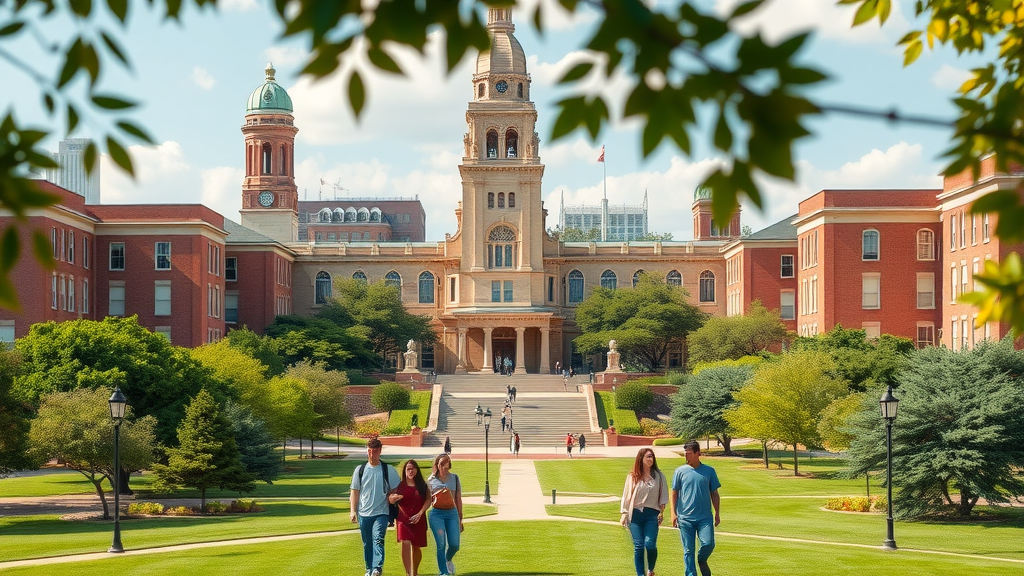
Texas State’s Contributions to Austin’s Academic and Social Culture
While UT Austin stands as the flagship, Texas State University also plays a major part in the austin history narrative. Located not far from the capital, Texas State has contributed a steady stream of graduates, creatives, and community leaders shaping local and statewide futures. Collaborations between the universities—ranging from joint cultural festivals to multidisciplinary research—continue to blur boundaries and foster innovation.
The influence of Texas State extends into the fabric of Austin’s social life. Events, student activism, and alumni networks have helped define progressive politics and inclusive values. Notably, the campus’s emphasis on social mobility and community engagement has inspired new approaches to education, housing, and the arts, ensuring that academic culture in the city of Austin remains both accessible and exceptional. These academic institutions are pillars of rich history that reverberate across central Texas .
Cultural Growth: Live Music, Barton Springs, and the Rich History of the Music Scene
Live Music Capital: Austin History Through Sound, Art, and Nightlife
No discussion about austin history would be complete without a spotlight on live music. Austin earned its title as the “Live Music Capital of the World” for good reason. From early jazz clubs in East Austin to the iconic venues along Congress Avenue, live music has been the city’s heartbeat for generations. The legacy of artists—from Willie Nelson to Janis Joplin—propelled Austin to national fame, while up-and-coming acts continue to reinvent the music scene nightly.
Music festivals like SXSW and Austin City Limits not only showcase talent but also highlight how deeply entwined sound, art, and civic pride have become in austin city . Neighborhoods across the city pulse with creativity, and annual events draw visitors from around the United States eager to experience a scene as influential as it is diverse. The way music permeates daily life—whether in small bars, massive arenas, or impromptu parkside concerts—cements its role as a living chronicle of innovation, resistance, and celebration.

Natural Wonders: Barton Springs and the Environmental Legacy
In the midst of Austin’s rapid urban expansion, Barton Springs remains a cherished sanctuary and a constant in austin history . Part of the Colorado River system, these natural springs have been a gathering place for centuries, first for indigenous peoples, and later for newcomers, musicians, and families. The springs draw residents for both leisure and inspiration, anchoring the environmental legacy that has long distinguished the city of Austin .
Environmental movements launched in defense of Barton Springs and its greenbelt have repeatedly shaped civic dialogue—galvanizing efforts to balance development with protection of the environment. The story of Barton Springs reflects the city’s enduring commitment to sustainability, public access, and stewardship. For both longtime locals and new Austinites, the springs offer a tangible link to the city’s natural roots and a promise that green spaces will remain a vital part of Austin’s future story.
- Austin was originally named Waterloo
- The state capitol’s height rivals the nation’s capitol in Washington, D.C.
- Home to one of the oldest African American neighborhoods in Texas
- Once a frontier border town exposed to floods from the Colorado River
- A mecca for artists and musicians since the early 20th century
Exploring the Austin History Center and Historic Neighborhoods
Guided Visits: Making the Most of the Austin History Center
For those eager to step inside the archives of austin history , the Austin History Center is an essential first stop. Housed within a stately building on Guadalupe Street, the History Center offers a window into every era of the city’s evolution—with interactive exhibits, original documents, and knowledgeable staff ready to guide visitors through more than a century of transformation. Here, you’ll handle primary sources on topics like the civil war , the founding of the state capitol , and neighborhood activism in East Austin .
Whether you’re embarking on solo research, joining a guided tour, or seeking advice on tracing family roots, the History Center’s resources are unmatched. Detailed maps, oral history collections, and rotating exhibits provide rich context for events big and small—from seismic political changes to the everyday rhythms of the town Austin . Devoting an afternoon to the Austin History Center offers discoveries for locals and newcomers alike, deepening appreciation for the city’s layers of meaning and memory.
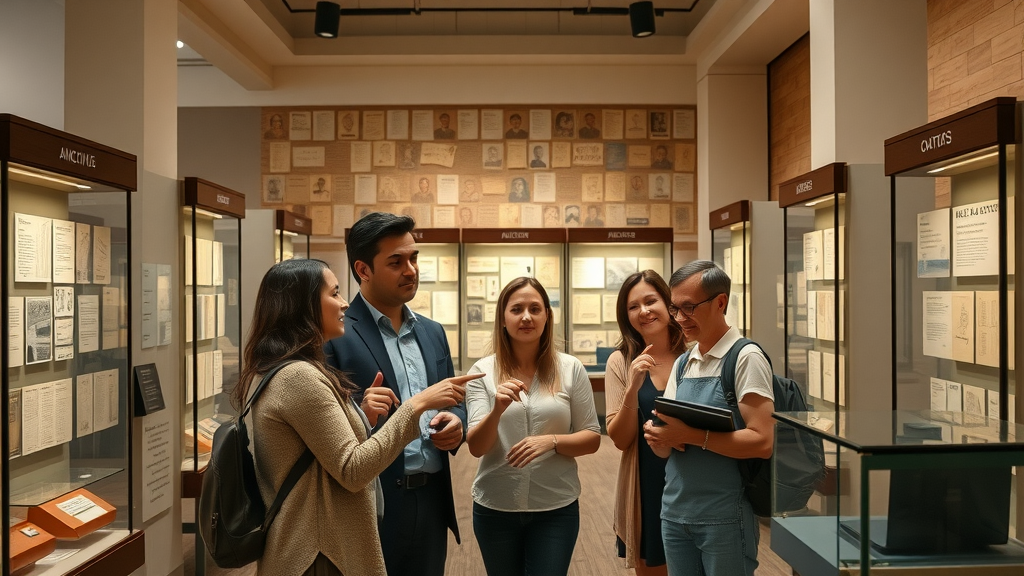
East Austin, Congress Ave, and Historic Districts Worth the Stroll
Outside the archives, Austin’s streets themselves serve as museums without walls. Walking tours of East Austin showcase churches, murals, and historic homes that speak to generations of triumph and challenge. Congress Avenue, with its parade routes and iconic theaters, invites visitors to trace the footprints of leaders, musicians, civic activists, and dreamers. Don’t miss the city’s historic districts—each block holds stories that connect personal histories to bigger themes in austin city and texas history .
Engaging with local guides, community groups, or self-guided mobile tours will reveal unexpected corners—whether the jazz-scented air of Victory Grill, the shade of Shipe Park, or the early-20th-century storefronts in Hyde Park. For a true understanding of austin history , experiencing these environments in person brings the past alive and connects you directly to Austin’s ongoing evolution as a beacon of diversity, culture, and civic courage.
Aerial drone footage providing sweeping overviews of Austin's historic sites—including the Texas State Capitol, Congress Avenue, and the scenic Colorado River. Captions highlight the history and significance of each location for visitors and residents alike.
Watch firsthand accounts from historians, longtime residents, and community leaders. Hear personal narratives that illuminate the milestones and moments—including the civil rights era, university expansions, and cultural revolutions—that define austin history to this day.
FAQs about Austin History: Key Details for the Curious
What is Austin, Texas known for historically?
Historically, Austin, Texas is celebrated as the capital city of the state. Its roots are firmly planted in the days of the Republic of Texas , when it was chosen as the political hub due to its central location. Austin is equally famous for its thriving live music scene, civil rights milestones, and as the home of major academic institutions like the University of Texas and Texas State. The city’s blend of political, educational, and cultural achievements shapes its unique legacy in Texas history and beyond.
What are 5 interesting facts about Austin?
- Austin was originally called Waterloo before its current name honored Stephen F. Austin.
- The Texas State Capitol stands among the largest of its kind in the United States.
- The “Live Music Capital of the World” reputation is rooted in a music scene dating back to the early 1900s.
- Austin served as a focal point for civil rights actions and is home to enduring African American communities.
- Congress Avenue once functioned as the main road for cattle drives entering the city from the surrounding plains.
What is Austin mainly known for?
Austin is mainly celebrated for its energetic live music, historic sites—including the State Capitol and Congress Avenue—top-tier academic institutions like the University of Texas at Austin , and its progressive, creative culture. As the political and cultural heart of Texas, the city attracts those interested in innovation, diversity, and a rich blend of tradition and modernity.
What was Austin originally called?
Before it became the capital city of Texas, Austin was known as Waterloo. The name change occurred in 1839, honoring Stephen F. Austin, whose efforts as the “Father of Texas” were central to the state’s establishment and identity.
Expert Insights: Notable Quotes on Austin History
"Austin history is a tapestry of communities, making it a unique testament to Texan diversity." – Texas State historian
Summary of Austin History’s Diverse Legacy
- Austin history is layered with stories from indigenous roots to modern innovation
- African American communities have been vital to the city’s growth
- The arts, education, and the environment remain pillars of Austin city
Ready to Discover Austin History Firsthand? Plan Your Immersive Visit
Set out on the streets of the capital city—tour the Austin History Center, stroll Congress Avenue, listen to live music, and connect with the diverse communities that make Austin history a living story. Your next adventure in Texas history awaits.
Start exploring Austin history now—visit the landmarks, listen to local stories, and be part of the living legacy that continues to flourish in the heart of Texas.
Sources
- https://www.austintexas.gov/department/austin-history-center – City of Austin Official
- https://texashistory.unt.edu/ – Texas History Portal
- https://www.austintexas.org/about-austin/history/ – Visit Austin
- https://www.tshaonline.org/handbook/entries/austin-tx – Texas State Historical Association
- https://www.thestoryofaustin.com/ – The Story of Austin
 Add Element
Add Element  Add Row
Add Row 



Write A Comment